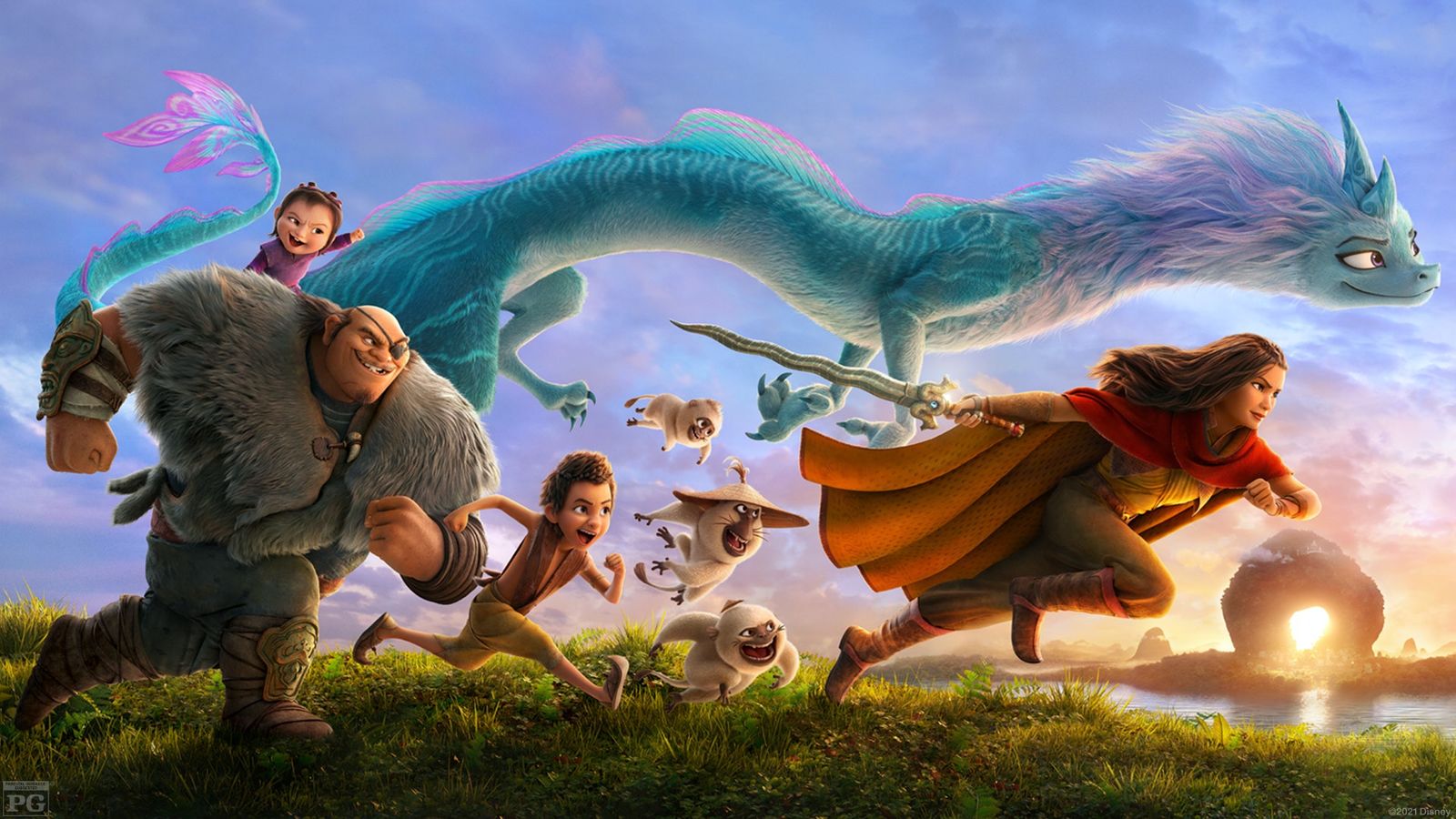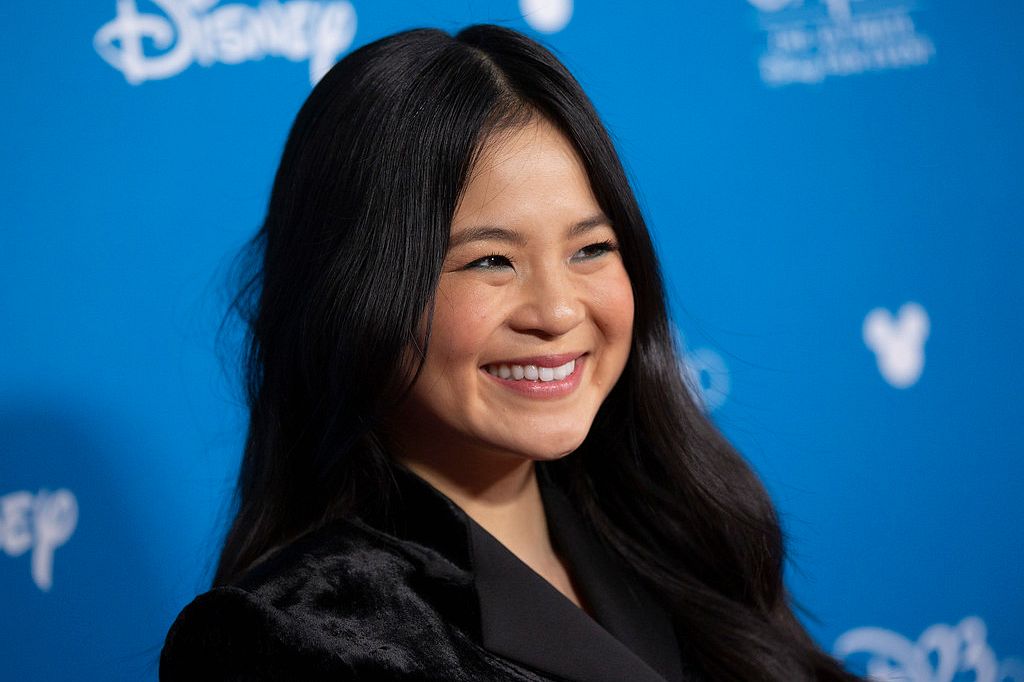When Disney’s Raya and the Last Dragon was released in March, it was a cultural milestone for Southeast Asians. Raya is the first Southeast Asian Disney princess in the Walt Disney Company’s 98-year history. And she’s not your usual Disney princess either.
The first scene of Raya and the Last Dragon sees the young princess wielding a pair of bastons, a nod to the national martial art of the Philippines, Arnis. In scenes like these, Raya and the Last Dragon highlights the diversity of Southeast Asian with respect, creating something recognizable yet wholly new and fantastic. diaCRITICS sat down with one of the film’s screenwriter, Qui Nguyen, via Zoom for a conversation about how this movie came about and what it means to him as a Vietnamese American writer.
So my first question is, how did you get involved with Raya and the Last Dragon? Can you tell me a little bit about the genesis of the movie?
The way that movies are done at Disney is basically a group of artists or a filmmaker will get inspired by something, and we go into a heavy state of research. About six years ago, a group of story artists, animators, and filmmakers went searching for a story. They traveled to Southeast Asia and were inspired by the cultures there and came back just basically hot to tell a story there.
I think the elements that they were really excited about was: 1) highlighting cultures that weren’t often seen in big major motion pictures, especially nothing that’s ever happened in a Disney animation before; and 2) they wanted to tell a big epic fantasy story with a dragon, specifically one of the dragons that they encountered through the architecture — the Naga of Southeast Asia.
That’s where it all began, and I think part of the DNA of it, too, was they were all very much inspired by the cultural differences on how hero stories are told between Southeast Asia versus the west. In the west, it’s very much an “I” thing: the world’s in trouble, one person or one group of people is going to save it single-handedly. What they were encountering while they were traveling through Southeast Asia was a very much a “we” component. It was about the community. It was, “The world’s going to be saved by us together. We are that world. We can save it.” That was a component they really just wanted to be able to share. It was something that inspired them all.
Basically six years ago, they set about creating the world of this movie. They built the characters, they built the world. They did the magic of Disney. Then about a year and a half ago while they were working on the story — at that point the movie had been in development four and a half years — and it was an opportunity for Don Hall, myself, Carlos López Estrada. We were very excited about the thing. I personally wanted to be part of the film, too, because it was my opportunity to highlight a Southeast Asian superhero, something that I’ve never seen before, something I desperately wanted to give my kids.

Raya and the Last Dragon seeks to bring as much elements from Southeast Asian cultures as possible to its story and visuals. Photo via TIME Magazine.
At a certain point, it just felt like a natural fit for us to come over and Don to lead the ship. He’s a veteran filmmaker. And then for Carlos and I, who are kind of new to the studio, it gave us the opportunity to push and pull on the story. I think it was a great mixture of veteran animators and filmmakers from Disney, but also getting the opportunity for having new voices like Carlos and myself go in there and go, “Hey, this is really important to us.” Or, “Have you thought about doing it this way?” To kind of help evolve and change it, like you always want in any movie you’re making. But for me, it was also letting me be able to give my personal touch, as a Vietnamese American, who desperately wanted to see a hero like this for my kids.
How did your background play into the making of the film and the writing of the script?
I started out in theater. I had a theater company called Vampire Cowboys and our whole mission as a company was creating superheroes for those who don’t often get to see themselves that way. All our stories featured heroes that were women, LGBTQIA and/or people of color. That was my background, and from there I got into TV and film, and ultimately landed over at the Marvel Studios in the Marvel Studios Writers Program.
Coming over from there to Disney, I had my background in basically writing heroes all the time. It felt very natural. I had written many Asian heroes with swords before, and so a lot of the things that I got to contribute in Raya was the voice of the characters, the sounds of the movie, the feel, the comedic tones. The heartbeat of the story — that was shaped by 450 plus people that had worked on it. A lot of the cultural specificity and personal stories that built a lot of the DNA was also shared by my co-writer Adele Lim, who wrote Crazy Rich Asians.

Qui Nguyen. Photo via The Writing Studio.
Definitely I got to add my love for superheroes and superhero teams in this. What’s so great about Raya and the Last Dragon, its very DNA is that of a superhero story or an action story, meaning Raya is equipped to be an Avenger basically, right? She is super strong. She has a sword. I’d throw her beside Black Widow and any hero out there and she would be able to hold her own.
Because of that, you would think that the story would ultimately, like a good superhero story, make it to the end and the superheroes all gang up and beat the crap out of the bad guy. But what’s so great about Raya was our opportunity to get to that point and surprise the audience by showing that her true strength isn’t with her fist or her muscle; it’s through an act of empathy. It’s an act of true bravery, which is reaching out to the supposed an enemy that she has no right in trusting and going, “Hey, let’s save this world together. Let’s do this together.”
It’s an act that we all, as people without superpowers, are able to do. What made me super excited about it is that — like some of my favorite Disney films, like Zootopia, which allowed us to talk about bias, and Big Hero 6 that allowed us to talk about grief — this allows me to be able to talk to my kids about this moment in time we’re in. The land of Kumandra, it’s under an existential crisis called the Druun. We’re in one that’s the pandemic.
I also think it’s very important that in this moment, where there is violence happening to Asian Americans, to be able to offer up a positive story that makes us feel empowered, that gives our kids the feeling of agency that they can be heroes too.
How does writing a screenplay differ from writing the plays that you before written?
A lot of people were very surprised to find me at Disney, because I write superhero stuff. I’m kind of known to be a very edgy writer, so the idea that I’m over here not swearing at all surprised a lot of my fans.
But theater is very collaborative, and working at Disney is crazy collaborative. I would even say more collaborative than even anything I’ve ever done in theater. Unlike TV, theater, and even live action film, the process is, as a writer, you go up in a hole and write a script, and then you hand it off to a director and a director runs off and then makes a movie with it. You’re there as a blueprint maker. Whereas in Disney animation, because the process is so long, there is no locked script. Every step of the way I’m working with the story artists, with my directors, with the voice talent. I was the fight consultant on this as well, so I was also working directly with the animators to choreograph fights.

Fight scenes in Raya and the Last Dragon are greatly influenced by Malaysian and Filipino martial arts. Photo via TIME Magazine.
My process ended around the same time as the director’s process ended, so there was no trade-off of, “Well, here’s the script. You go.” It was super artistically challenging in the sense that I was more involved in the process than I ever thought I would be in anything when it comes to major motion pictures. But also it was one of the most artistically satisfying experiences that I’ve ever been part of, because I got to touch everything all the way through.
For the 450 plus animators, designers, story artists, we all get to put a little bit of our soul, a little bit of who we are into this film. So each of these characters have 450 plus parents, and that’s what makes it great. Of course, we’re building a movie that’s supposed to stand the test of time, that will hopefully be around for the next 10, 20, 30 years, and will continue to inspire kids to be heroes. It’s great to know that, like the theme of the movie, it’s only possible because we were able to do it together. There is no single auteur that makes these.
You touched a little bit about the movie standing the test of time. How do you see this Southeast Asian moment will look 10 years in the future, 20 years in the future?
This was my first time ever making a Disney movie, but I was very aware that Disney films affect pop culture. Like Beauty and the Beast, Aladdin, Lion King, and Frozen, it is part of the cultural touchstones that we all globally will look at and be able to point our finger to. I’m very excited that I was able to be part of a movie that touches pop culture that way, that celebrates Southeast Asian cultures.
Often my kids, when they see big superhero fare, those characters don’t look like them. But then to have one where they don’t have to pretend to be, “the Asian Spider-Man” or the “Asian Captain America,” or the “Asian Black Panther,” and they can be like, “Oh, I just get to be Raya.” Suddenly my white friends and my Black friends and my Latinx friends, they also get to pretend to be that character too.
That was one of my favorite memories in this process so far, which just happened a couple of days ago. When the movie opened, we shared it with our pod family, which was all white. Those kids were all outside fighting over who was going to be Raya and Namaari. And these were all boys, too. They wanted to be this hero that weren’t even the same gender or race. It was one of those subliminal things that will always be part of my kids’ childhoods now, it’s a subtle thing that happens where a kid’s like, “Oh, I want to be like her.” That is something that I longed to have when I was a kid, and I was super happy to be able to give that to my kids. Hopefully, that’s a thing that this pop culture moment can be for them.
As for the long run, I hope that 20 years from now, this is just one of the movies. Another one of those movies of many, many Asian American movies that have been made. It’s a nice being the first of something, but you hope that when you’re the first of something that means there’s going to be subsequently a lot more. You don’t want to just be the one and then have nothing else. I want to see more movies that have Kelly Marie Tran as the lead. Not just in this film, but so many more, and that there are more Kelly Marie Trans that get to come.

Kelly Marie Tran, the voice of Raya, wears an áo dài during the movie's online premiere.
Being Asian American or being Vietnamese American, it’s not easy for families to embrace their kids in wanting to follow a life in the arts. I think it’s a lot easier when they’re able to point to people who’ve succeeded in this medium, because it was the question my parents often asked me when I said I wanted to be a screenwriter. They’re like, “Name me a Vietnamese screenwriter.” And I was like, “I don’t know,” and so they’re like, “Because we aren’t screenwriters.”
Now this happened literally recently: my parents going, “Oh, we remember asking you this a lot. Name me that person. And now you are that person.” There’s going to be someone else who gets to go, “Well, Qui did it, so I can do it. Kelly did it, so now I can do it.” So that’s something that I think is an important thing.
But again, I don’t want to be the first and only. I want to be one of the first of many, and I hope that that’s what this moment means.
What advice or words of wisdom do you have for a young Vietnamese or Southeast Asian American diasporic person who wants to get into the arts? Or who wants to be a screenwriter or a theater maker? What is your advice for them?
It’s the same advice. I truly believe that there are only two things you need to have to be able to have a life in the arts, to get a career in the arts. One you control, the other one you have to work for. It’s tenacity and voice.
Tenacity is something you control. You just don’t give up. You try to work. Every “no” that you get, try to turn it around. Try to stick to it. Work hard, get better at it.
The other thing is voice. Voice is harder to get, because some people get it right out of the gate, and those are the people you always admire. But you forget that just for every genius, there’s a hundred or so more people who’ve spent years finding their voice and their way of telling a story.
What I would tell specifically to a Vietnamese American or Vietnamese kid who wants to have a career in this is: there’s so many stories. You’ve got to find those stories that only you can tell. The thing that makes people want to hear stories is the authenticity that comes from not just culturally but the authenticity that comes from just you. What is the story that only you can tell? Is it something from your life? Is it something you’re crazy passionate about? Is it a mixture of ideas that only you can dream up? What is that thing? If you can figure out that thing, if you can figure out that story, that can be your calling card in this industry. And we all have those stories. Every single one of us. But the job is finding it within yourself to telling that story, and finding that story to tell.
This interview has been edited and condensed for clarity.
This interview by Eric Nguyen originally appeared in diaCRITICS and has been republished with permission as part of an ongoing collaboration between Saigoneer and diaCRITICS.
















